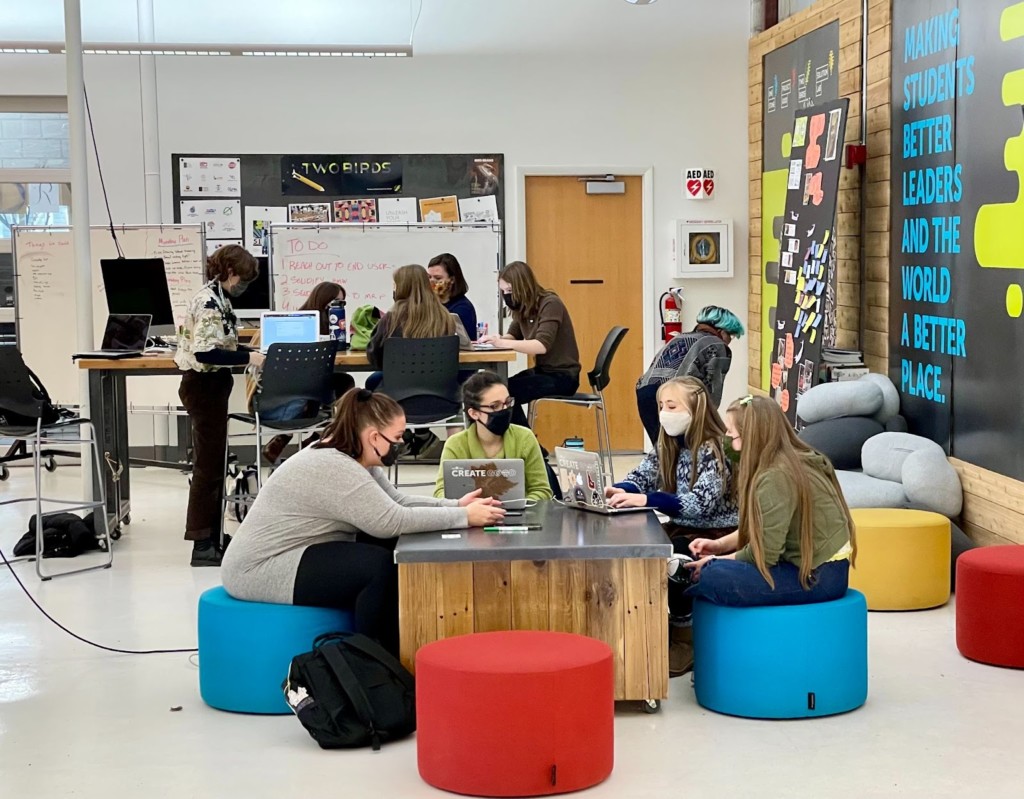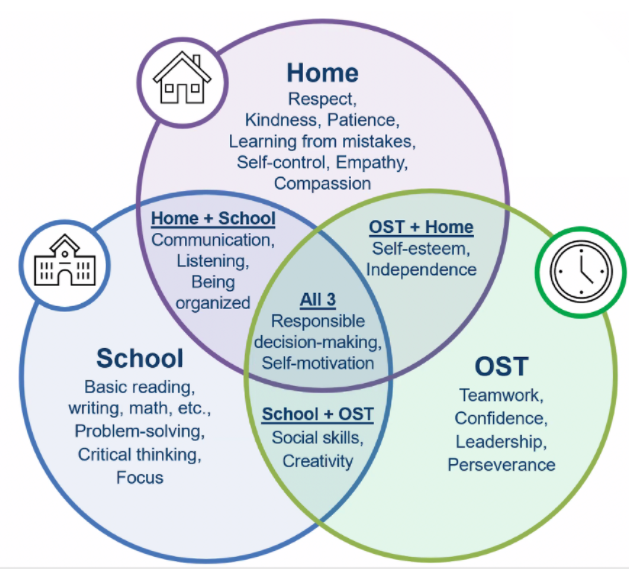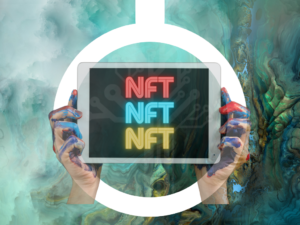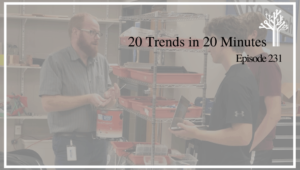Trends Shaping Education in 2022
Key Points
-
It’s hard to see trends in a crisis.
-
Around the edges and behind the scenes three important shifts accelerated: new learning goals, team tools and staffing, and active learning.

It’s hard to see trends in a crisis. And now layered crises–pandemic, climate, racial reckoning, economic inequity, geopolitical tension–is the new normal. We’re living through a jumble of unexpected events that thwart pattern recognition.
Most schools are starting 2022 in person but with a disappointing COVID surge and renewed questions about how to best safeguard students, teachers, and communities. After two years of pandemic education, fatigue is the overwhelming experience of many educators.
The return to in-person learning for the 2021-22 school year was largely a return to school as usual with a bit of tutoring added. Around the edges and behind the scenes three important shifts accelerated: new learning goals, team tools and staffing, and active learning.
New Learning Goals
For 20 years, school networks have been first movers in adopting new outcome frameworks. These have included grant-sponsored networks (like XQ), platform networks (like New Tech Network), and managed networks (like Summit Public Schools).
Starting 10 years ago, hundreds of school districts joined EdLeader21 (now part of Battelle for Kids) and launched community dialogs resulting in new goals expressed as a Portrait of a Graduate.
Despite pandemic conditions, and in some cases because of them, we saw communities globally adopting broader aims driven by the obvious need for social and emotional learning as well as attention to wellness and mental health and changes in the nature of work including the need for both independent initiative and collaborative data-driven problem-solving.
Communities express these broader goals in a variety of ways and bring them to life through culture, communication and learner experience. We were impressed with how Hopkins Public Schools implemented their graduate profile, shared values and design principles.
The emerging trend in learning goals is diversity, equity and inclusion. While critical race theory was weaponized by opponents in 2021, the trend toward inclusive environments and experiences is strong. Districts like Hopkins share a value of “vigilant equity.”
The next trend in learning goals is incorporating agency and purpose, citizenship and contributing to community. We think difference-making is the new superpower and we’re seeing more schools and programs incorporate it. One Stone (featured image) has a mission making “students better leaders and the world a better place” and includes passion and goal setting as competencies.
2022 Learning Trends
|
Category |
Mega Trends |
Emerging Trends |
Next Trends |
|
Aims |
New goals (what) |
Equity & Inclusion (who) |
Contribution (why) |
|
Strategies |
Active learning |
Rebundling |
Immersive learning |
|
Teams |
Learning platforms |
Learner experience |
Family & out of school |
|
Measures |
Competency |
Credentialing skills |
Wellness |
|
Supports |
Integrated services |
Guidance |
Growth communities |
Active Learning
While remote learning was often a throwback to asynchronous content and worksheets (just digital this time), there is a long trend toward active learning including project-based learning, design-based challenges, work-based learning and entrepreneurial experiences.
Over the last two years, the 75 high schools in metro Kansas City continued to push real world learning forward even during the months of remote learning. Some client-connected projects and internships shifted to virtual. North Kansas City Schools implemented career academies in all four high schools with embedded projects and work experience. Nearby Liberty Public Schools launched two micro high schools to showcase integrated project-based learning–much of it addressing Global Goals. The Innovation Academy at Basehor-Linwood High supports self-directed community-connected projects. Notre Dame de Sion developed three signature impact programs that empower student contributions.
While critical race theory was weaponized by opponents in 2021, the trend toward inclusive environments and experiences is strong.
Tom Vander Ark
Also spurred by Kansas City innovation, the CAPS Network is a growing association of 123 school districts where “Students fast forward into their future and are fully immersed in a professional culture, solving real world problems, using industry-standard tools and are mentored by actual employers, all while receiving high school and college credit.”
Team Tools and Staffing
After a hundred years of teaching as an individual practice, personalized and competency-based learning has been creating the need to work in teams. Next Education Workforce at ASU Fulton Teachers College has been advancing team-based preparation and staffing in Arizona schools for the last four years. In dozens of districts across the country, Opportunity Culture has been promoting team-based staffing leveraging the multi-classroom leadership of great teachers.
The rapid shift to remote learning during the pandemic pushed school districts to adopt common learning platforms and versions of team staffing (including full time, part-time, pre-service, substitutes and community resources). The adoption of common enterprise tools and team staffing means less autonomy for individual teachers but stronger support and potentially more autonomy for teams within an aligned system.
Learning legend Karen Pittman points to the next trend in teaming: parents, teachers, and out-of-school providers working together to facilitate their shared and unique learning outcomes (see diagram below and discussion here). These collaborations are currently facilitated by texting platforms like Remind. In the near future, they will be aided by personal portable digital records with permission (sometimes partial) read/write access.

Measures and Credentials
There is a global shift from seat time to demonstrated competence as a measure of learning and capability signaling. Given the widely varying learning experiences during the pandemic (both formal and informal), we anticipated a step function increase in competency practices in schools. We haven’t seen much evidence of structural changes to accommodate individual pacing through frequent regrouping by subject (age cohorts reign supreme) but with extra resources, many schools are providing some extra tutoring to address gaps.
Microcredentials continue to grow as frameworks for teacher professional learning. These short units of study allow teachers choice in what to learn and how to demonstrate their new capabilities. Nonprofit digiLEARN is leading a consortium of states expanding access to quality microcredentials.
The shift to competency accelerated in the corporate sector over the last two years with skills-based hiring. Seeing declining information value in degrees, many companies got smarter about identifying job-specific success skills and updated their hiring process to attract and retain people possessing them.
Over the last few years, big tech launched or updated free job skill pathways often incorporating
digital credentials. Leaders include IBM, Google, Amazon, Microsoft, Salesforce.
Skills credentialing will expand in high schools in the next few years in support of recently adopted learning goals and as part of career-focused pathways.
Skill credentials will increasingly be communicated in mastery transcripts and digital learner records. More than 400 schools have joined the Mastery Transcript Consortium to move from a list of courses to a richer description of capabilities. Greenlight Credentials is a blockchain record unlocking opportunity for Texas learners and beyond.
The next trend in measurement is wellbeing (mental and emotional health) and wellness (positive habits and behaviors). The pandemic stressed the importance of wellbeing and the important role school can play on collecting data and sharing resources. One example is the Wellbeing index from Turnaround for Children which can be taken daily or weekly by an entire class in 60 seconds. The 12 items cover feeling and functioning. It helps learners reflect on how they’re doing and gives teachers a quick sense of how to best support learners. From screen-time monitoring to wearables that track physical activity, we have more opportunities to put data into the hands of students to inform their own learning.
Integrated Supports
Many schools strengthened their support systems during the pandemic. A Tiered System of Supports provides “a framework for an adaptive, responsive continuum of integrated supports for all students, that vary in level of intensity,” according to Turnaround for Children. It can help promote more equitable outcomes for students by increasing academic, social, and emotional supports where most needed.
Before and during the pandemic, the number of in and out of school and postsecondary learning opportunities exploded–the great unbundling of education. The new challenge is helping students make good choices on their learning journey. Rebundling and postsecondary planning is increasingly a role of a secondary school advisory system. In Cajon Valley USD, a partnership with the local workforce board provides personalized and localized guidance. In Kansas City, guidance increasingly incorporates entrepreneurial experiences as part of the Real World Learning initiative.
And, finally, in and out of school we’re seeing more growth communities–small groups of learners committed to shared growth. In schools, We Are Crew from EL Education is a beautiful collection of resources for creating advisory groups of mutual support. Out of school, Seth Godin, through altMBA and Akimbo workshops, pioneered the productive use of small synthetic cohorts learning together–a productive combination of peer support and collective accountability. Journey.do, an ASU spinout, supports growth groups in schools, juvenile detention, and faith communities. These examples illustrate that most learners are inspired by relationships and grow in community.
Broader goals, more active learning, team tools, stronger supports, and learners equipped to tell their story–these are the big trends of 2022. Our best to each of you in the new year.








AHZ Associates
Have you ever considered how climate change would affect our educational institutions in the coming decade? What does the fact that our society are growing more individualised and varied entail for schools? The study Developments Shaping Education is published every three years and examines key economic, political, social, and technical trends that impact education. While the patterns are clear, the issues posed in this book are speculative, with the goal of informing strategic thinking and stimulating debate on the educational difficulties. This year's edition, published in 2022, covers a wide range of issues including economic growth, living and working conditions, knowledge and power, identity and belonging, as well as our physical environment and human bodies and relationships.It contains parts on COVID19's influence on global trends as well as new futures thinking sections that encourage readers to consider how the future could differ from our present assumptions. This book is intended to provide policymakers, researchers, educational leaders, administrators, and instructors with a reliable, non-specialist center of foreign comparative trends impacting education, whether in schools, universities, or adult education programmes. Students and the general public, including parents, will find it interesting.